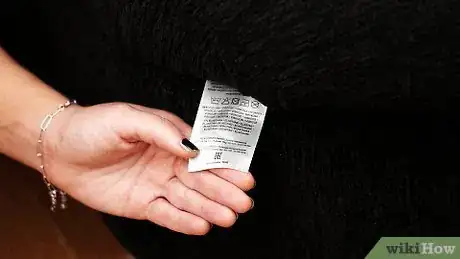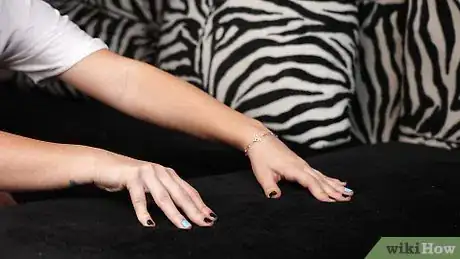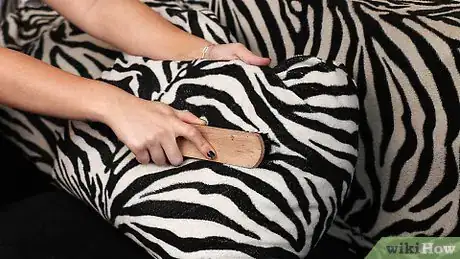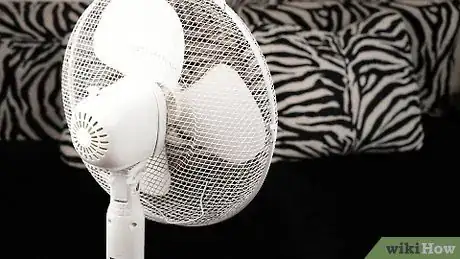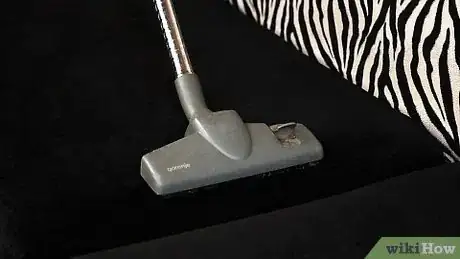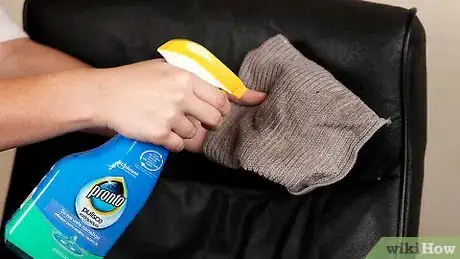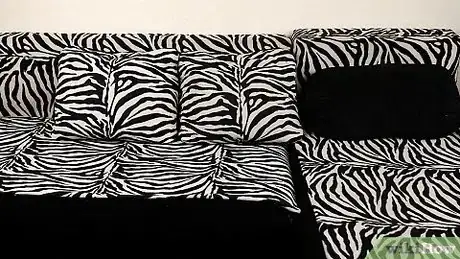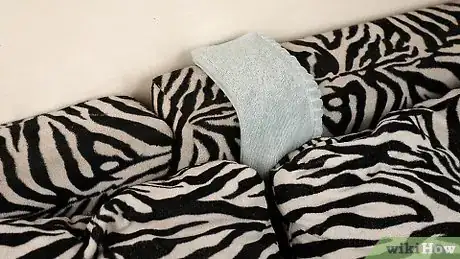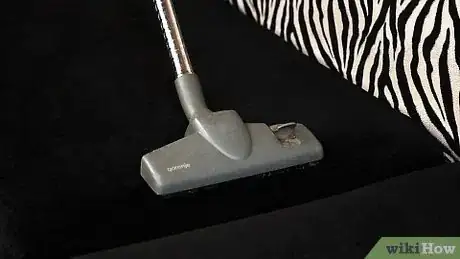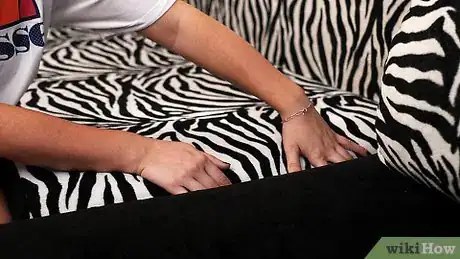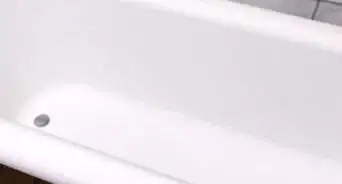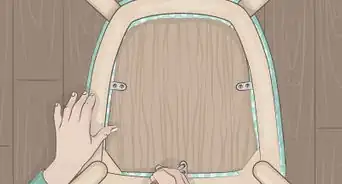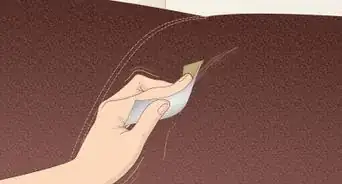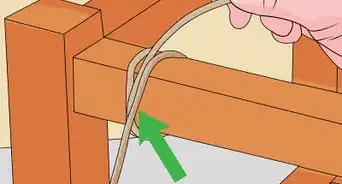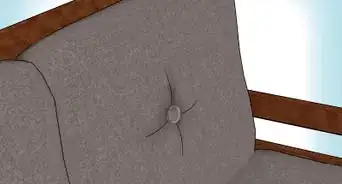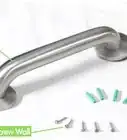This article was co-authored by Ashley Matuska. Ashley Matuska is a Professional Cleaner at the Founder and Owner of Dashing Maids in Denver, Colorado. Ashley has over seven years of experience in the cleaning industry. She and her team specialize in offering sustainable deep cleaning and maintenance cleaning services.
There are 15 references cited in this article, which can be found at the bottom of the page.
This article has been viewed 81,191 times.
Good furniture gets a great deal of use over time, and that means stains, dirt and dust, unpleasant smells, and general wear and tear. But if you keep your upholstery clean and like new with proper cleaning, it will keep you and your family comfortable for years to come. Depending on the material your upholstery is made of, you may be able to perform deep cleaning with a steam cleaner or homemade solution every year or two. Most upholstery can also be spot cleaned with special cleaners, and all of it can get basic cleaning with a vacuum and brush. Performing regular cleaning specific to your upholstery’s material will help keep your furniture clean, dust-free, and ready to use!
Steps
Performing Basic Cleaning
-
1Check your upholstery tag. Upholstery can be made of many different materials or blends, and these have different cleaning requirements. Whether you can spot clean or deep clean will depend on the material. Every upholstery tag should have a letter code on it that indicates how to clean the material, and they mean:[1]
- W for water: use water-based cleaning solutions, such as soap and water. Fabrics with this tag are often made from materials like polyester, nylon, acetate, and olefin.[2]
- S for solvent: clean your upholstery with a solvent-based solution that doesn’t contain water, such as dry cleaning solution. Most upholstery with this code is made from natural fibers like cotton and denim, rayon, linen, silk and wool, velour, and damask.[3]
- SW: use solvent- and/or water-based cleaning solutions.
- X: use neither solvent- nor water-based cleaning solutions; only clean it with vacuuming and light brushing to remove dirt and soil.
-
2Remove the cushions. Check to see if the cushions have removable and washable covers. If the covers are removable, wash them according to the type of material. Otherwise, clean the cushions following the same steps as the rest of the upholstery.Advertisement
-
3Remove large debris. With a spoon or spatula, pick up large food particles, solid spills, rocks or dirt, and any other large debris that has accumulated on your furniture.
-
4Vacuum the furniture and cushions. Use the upholstery attachment or soft brush to remove dirt and dust from the upholstery and both sides of the cushions. Work from left to right, and top to bottom in short, overlapping strokes.[4] Use a long, thin attachment to vacuum dirt and debris from corners and crevices.[5]
- Remove stubborn pet hair with a clothing brush or pet hair remover if necessary.
Cleaning With Water-Based Solutions
-
1Spot clean stains and dirt. For fabric with a W or SW code, you can use regular water-based upholstery or fabric cleaners to remove small stains from your furniture. There are many commercial products available, so follow the manufacturer’s instructions regarding product application and removal. Apply the product with a clean cloth, gently rub or blot the stain, and clean the area with water or a dry cloth as instructed.
- Hardware stores, general stores, and department stores all carry upholstery and fabric cleaners.
- Always do small test patches of new cleaning products on your upholstery in a hidden spot to ensure it won’t cause shrinkage, color bleaching, or other changes to the fabric.[6]
-
2Use a homemade cleaner as an alternative. Make your own spot cleaner by mixing a quarter cup of dishwashing liquid with one cup of water. Beat it with an electric mixer until it’s thick and foamy. Then:
- Apply the foam to stains on the upholstery with a microfiber cloth or soft brush.
- Gently rub the stain with the suds, and then remove the excess foam with a spatula or spoon.
- Wipe away the leftover suds with a clean, damp cloth.
-
3Deep clean extremely soiled upholstery. Steam cleaners can be rented from most grocery stores if you don't have one of your own. Follow the manufacturer’s instructions on your particular machine for the best results. Fill the reservoir with water and add the indicated amount of cleaning solution (if applicable). Start with the cushions and set them aside to dry when you move on to the main piece of furniture. Work in small sections, overlapping your strokes until you have cleaned all the material.[7]
- To clean the entire piece of furniture with your homemade soap and water solution, start at the top and work your way down, applying suds to small sections of upholstery. Brush the area gently, remove the excess foam, and gently wipe the area with a clean, damp cloth. Move on to the next small section, and continue the process until the entire piece is clean.[8]
- Deep cleaning should be performed every one to two years.
-
4Allow the material to dry completely. Before returning cushions or sitting on the furniture again, make sure it has completely dried. To accelerate drying time, clean your upholstery on a warm, sunny day, and consider setting up an oscillating fan in the room to keep air moving over the upholstery as it dries.[9]
Cleaning With Solvents
-
1Spot clean soiled areas. For fabrics with an S or SW code, use a water-free solvent to clean your upholstery. With a clean cloth or towel, blot the solvent onto the upholstery in areas that are dirty or soiled. You can also use a soft brush to gently work in the solvent and remove dirt.[10]
- Popular products include solvents and dry cleaning solutions from Chemspec and KleenRite.
- Only spot clean areas that are soiled.
- Always use solvent-based cleaners in a well-ventilated area, never smoke nearby, and stay away from open flames.
-
2Clean cushions fully. If areas on cushions require spot cleaning, it’s best to clean the entire surface to ensure a uniform appearance.[11] Apply the solvent with a clean towel and blot or brush the surface of the cushion.
-
3Dry the cleaned area. Set up an oscillating fan so that it continuously blows fresh air over the upholstered surface.
-
4Vacuum the furniture. To remove additional solvent and dirt, vacuum the furniture and cushions once the areas have dried fully.
Cleaning Leather Upholstery
-
1Wipe down the upholstery. Combine equal parts water and vinegar in a bowl. Dip a microfiber cloth into the solution. Wring out the cloth to remove as much moisture as possible. Wipe down parts of the upholstery that need some minor cleaning. Use as little liquid as possible, as water can stain leather.[12]
-
2Apply a leather cleaning agent. For areas that are more soiled and require a more vigorous cleaning, apply a small amount of leather cleaning product to a towel or cloth and gently rub the soiled area. Wipe away any excess cleaner and allow the spots to dry.[13]
- Alternatively, you can also make your own leather cleaner by combining equal parts lemon juice and cream of tartar. Work it into a paste, and apply small amounts of the paste to a clean cloth. Gently rub soiled areas with the paste. Wipe down any excess and allow the areas to dry.[14]
-
3Apply a leather conditioner. Conditioning products help keep leather soft and moist, and prevent it from cracking. Apply small amounts of conditioner with a cloth and wipe away any excess.[15]
Keeping Upholstery Clean
-
1Prevent fading. The most common cause of fabric fading is exposure to UV rays. You can help prevent this by positioning your furniture so it’s not in the path of the sun, covering your furniture with a protective material, or using UV-protective blinds and drapes to keep the sun out.[16]
-
2Keep napkins or towels nearby. In case of spills, it’s good to have cleaning products nearby to prevent staining. Be sure to use white or undyed towels or napkins to prevent dyes from leaching onto your furniture. Blot stains instead of rubbing them,[17] and spot clean stains as necessary.
-
3Vacuum regularly.[18] Dirt and dust can make your furniture look grimy, but regular vacuuming will help prevent this. Every two weeks, use a soft brush to brush dirt and oil loose around head and arm rests. Vacuum all upholstery surfaces, including cushions and crevices.[19]
- To deal with smells, sprinkle the upholstery with baking soda one night before bed and let it sit overnight. Vacuum it up in the morning.[20]
-
4Coat it with a fabric and upholstery protector. For messy, busy houses where furniture is prone to frequent staining, consider spraying your upholstery with a fabric protector that repels liquids and stains. Make sure the product is suitable for use with your upholstery code.
Expert Q&A
Did you know you can get expert answers for this article?
Unlock expert answers by supporting wikiHow
-
QuestionHow can I clean a fabric sofa?
 Ashley MatuskaAshley Matuska is a Professional Cleaner at the Founder and Owner of Dashing Maids in Denver, Colorado. Ashley has over seven years of experience in the cleaning industry. She and her team specialize in offering sustainable deep cleaning and maintenance cleaning services.
Ashley MatuskaAshley Matuska is a Professional Cleaner at the Founder and Owner of Dashing Maids in Denver, Colorado. Ashley has over seven years of experience in the cleaning industry. She and her team specialize in offering sustainable deep cleaning and maintenance cleaning services.
Professional Cleaner
-
QuestionHow do I clean car upholstery?
 DvortygirlCommunity AnswerThere are a variety of ways: vacuum, brush, shampoo. WikiHow has a separate article describing all that. Please see Clean Car Upholstery.
DvortygirlCommunity AnswerThere are a variety of ways: vacuum, brush, shampoo. WikiHow has a separate article describing all that. Please see Clean Car Upholstery.
References
- ↑ http://upholsterycleaninghub.com/
- ↑ http://www.howtocleanstuff.net/how-to-clean-code-s-upholstery/
- ↑ http://www.howtocleanstuff.net/how-to-clean-code-s-upholstery/
- ↑ http://www.realsimple.com/home-organizing/cleaning/cleaning-living-room/how-clean-upholstery/suction
- ↑ http://www.bhg.com/decorating/lessons/furniture-guide/upholstered-furnishings-care/
- ↑ https://www.angi.com/companylist/upholstery-cleaning.htm
- ↑ https://www.youtube.com/watch?v=SeAlrO9eCcc
- ↑ https://www.cleanipedia.com/gb/furniture-upholstery/how-to-clean-a-sofa-and-remove-stains-from-furniture
- ↑ http://www.howtocleanstuff.net/how-to-clean-cloth-upholstery/
- ↑ http://www.jondon.com/how-to/technical-tips/furniture-and-upholstery/upholstery-cleaning/dry-cleaning.html
- ↑ http://www.howtocleanstuff.net/how-to-clean-code-s-upholstery/
- ↑ http://www.diynetwork.com/how-to/make-and-decorate/decorating/tips-for-cleaning-leather
- ↑ http://upholsterycleaninghub.com/clean-leather-furniture/
- ↑ http://www.diynetwork.com/how-to/make-and-decorate/decorating/tips-for-cleaning-leather
- ↑ http://upholsterycleaninghub.com/clean-leather-furniture/
- ↑ http://www.bhg.com/decorating/lessons/furniture-guide/upholstered-furnishings-care/
- ↑ http://www.stain-removal-101.com/how-to-clean-upholstery.html
- ↑ Ashley Matuska. Professional Cleaner. Expert Interview. 15 April 2019.
- ↑ http://www.howtocleanstuff.net/how-to-clean-code-s-upholstery/
- ↑ https://www.cleanipedia.com/gb/furniture-upholstery/using-furniture-cleaners-how-to-clean-the-sofa-and-chairs
About This Article
To clean upholstery, first vacuum the upholstery using a fabric vacuum attachment. Then, check the care tag on the upholstery to see what kind of cleaner you can use on it. A ""W"" on the tag means you should use water only, ""W/S"" means you can use water or cleaning solvents, ""S"" means you should just use a cleaning solvent, and ""X"" means you can only vacuum and brush the upholstery. For ""W"" upholstery, use a damp cloth to wipe down any dirty areas on the fabric. You can also use a handheld steamer. For ""S"" upholstery, treat dirty areas with a fabric cleaning spray. Then vacuum the upholstery a second time and let the fabric air dry. You can also spray the upholstery with an antibacterial fabric spray to get rid of germs and odors. To clean leather upholstery, first mix equal parts water and white vinegar in a spray bottle. Mist any dirty portions of the leather with the mixture, then wipe the leather down with a microfiber cloth. Finally, wipe the leather down with a dry cloth to remove any excess moisture. If you want to learn how to clean leather upholstery, keep reading!
